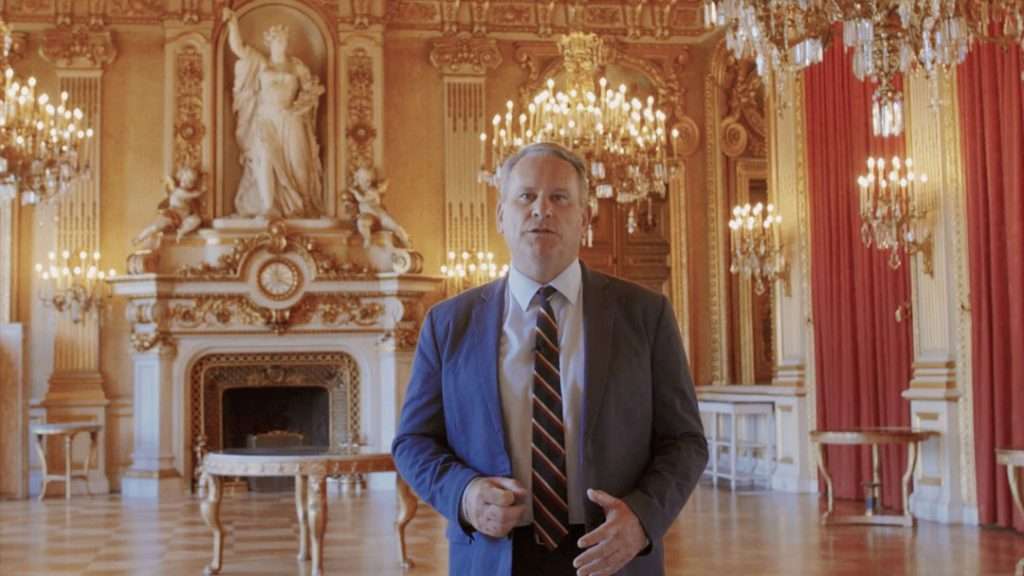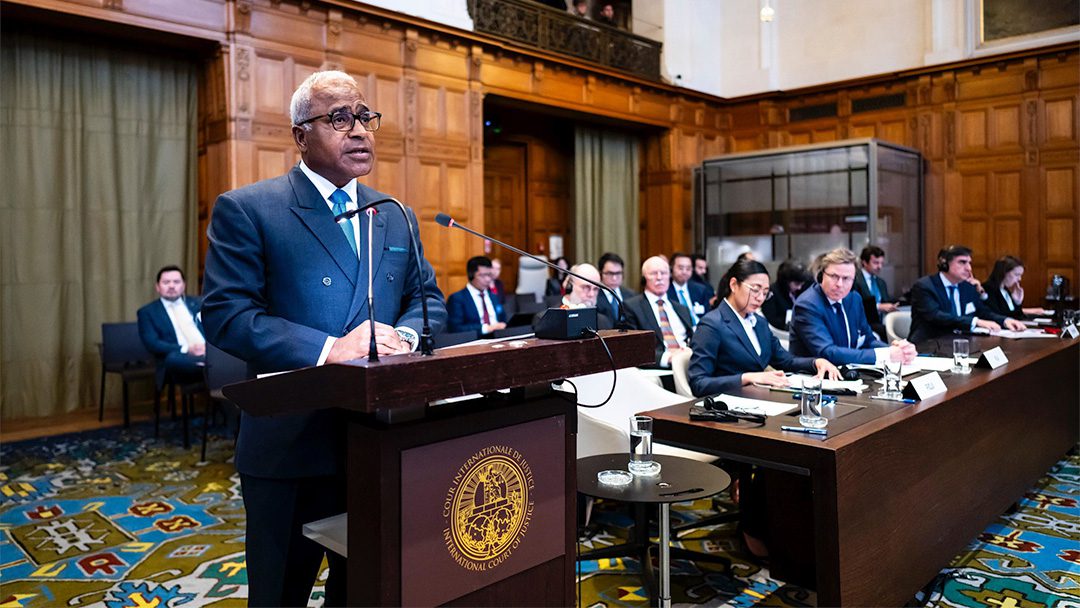On 31 October 1918—exactly one year after the Allied victory at Beersheba and the War Cabinet meeting that decided on the Balfour Declaration—the Ottoman Turks surrendered and World War One on the Eastern Front came to an end. At 11am on 11 November 1918 the guns on the Western Front, too, fell silent and the war finally finished.
The War to End All Wars
The carnage of the previous four years had been unprecedented. Many hoped that the Great War, as it was then known, would be ‘the war to end all wars’. To ensure that end, the victorious Allied powers called a peace conference in Paris, which commenced in early 1919, at which a series of treaties were signed, including the Treaty of Versailles and the Treaty of Sèvres.
On the eve of the Paris Peace Conference the leader of the Zionist Organisation, Chaim Weizmann (who would later become the first President of the State of Israel in 1948) met with the recognised leader of the Arab world, Emir Feisal, son of Hussein bin Ali, Sharif of Mecca. They came to an agreement that has since been virtually expunged from the annals of history—perhaps deliberately.
Detractors of the concept of a Jewish national home in Palestine prefer to call attention to two agreements that are alleged to have been made before the Balfour Declaration – one from 1915 and the other from 1916.
1915: The McMahon-Hussein ‘Agreement’
In 1915, while Sir Henry McMahon was the British High Commissioner of Egypt, he entered into correspondence with Feisal’s father, Sharif Hussein, to bring about a universal Arab uprising against the Ottoman Turks. In return McMahon is alleged to have promised Arab independence in territory that was under Ottoman rule. The correspondence became known as the ‘McMahon-Hussein Agreement’.
The Arab uprising, led by T E Lawrence (Lawrence of Arabia) was only a partial one and, according to the late Professor Isaiah Friedman, the correspondence between McMahon and Hussein contained more disagreement than agreement, and was never finalised. Years later, Sir Henry McMahon wrote in The Times:
‘I felt it my duty to state, and I do so definitely and emphatically, that it was not intended by me in giving this pledge to King Hussein to include Palestine in the area in which Arab independence was promised. I also had every reason to believe at the time that the fact that Palestine was not included in my pledge was well understood by King Hussein.’ 1
1916: The Sykes-Picot ‘Agreement’
The other agreement, known as the ‘Sykes-Picot Agreement’, was made the following year. It was a secret memorandum between Sir Mark Sykes and François Georges-Picot, who were British and French diplomats respectively. The intention was to come to an agreement regarding the spheres of control that Great Britain and France would have over the defeated Ottoman Empire. In reality, it was a plan by Britain and France to colonise much of Ottoman territory.
Palestine, under this plan which was counter-signed by then-British Foreign Secretary Edward Grey and later made public, would have been under international control. Absent from the agreement, which had no legal validity anyway, was any mention of a reconstituted Jewish homeland, even though the Zionist aspiration was well known to both governments. For this reason, the opponents of the right to self-determination for the Jewish people in their Promised Land like to promote this ‘agreement’ (as well as the one from 1915) in their attempt to discredit the Balfour Declaration.
The agreement that Weizmann and Feisal signed… was crucial to what was presented in Paris… even though Feisal and other Arab leaders later reneged on it
At the end of 1916, Prime Minister Asquith and Foreign Minister Grey resigned and were replaced by David Lloyd George and Arthur James Balfour, respectively. They abandoned the Sykes-Picot plan, although the maps that Sykes and Picot had drawn up were later influential in determining the boundaries of the Mandates.

1919: The Feisal-Weizmann Agreement
The Paris Peace Conference commenced on 18 January 1919. The agreement that Chaim Weizmann and Emir Feisal signed in London on 3 January was crucial to what was presented in Paris (and decided on at the San Remo Conference the following year), even though Feisal and other Arab leaders later reneged on it. The preamble to the agreement acknowledged “the racial kinship and ancient bonds existing between the Arabs and the Jewish people, and [realised] that the surest means of working out the consummation of their natural aspirations is the closest possible collaboration…”
Article 3 of the agreement stated: “In the establishment of the Constitution of Palestine, all such measures shall be adopted as will afford the fullest guarantees for carrying into effect the British Government’s Declaration of 2nd November, 1917 [i.e. the Balfour Declaration].”
Article 4 began by stating: “All necessary measures shall be taken to encourage and stimulate immigration of Jews into Palestine on a large scale, and as quickly as possible to settle Jewish immigrants on the land…”. Feisal added a proviso to the agreement in Arabic in his own handwriting: “Provided the Arabs gain their independence, else I shall not consider myself bound by one word of this agreement.”
The Paris Peace Conference
On 6 February 1919 the Arab delegation, led by Emir Feisal, presented their claims to the Principal Allied Powers at the Paris Peace Conference. In presenting the territorial claims for the Arab independent states, he left Palestine out, saying: “Palestine for its universal character, he wants to leave to one side for the mutual consideration of all parties interested.” So, at that point Feisal was complying with the agreement he had made with Weizmann.
Three weeks later, on 27 February, Chaim Weizmann and the Zionist Organisation presented their claim for the Jewish right to re-constitute their ancient homeland. Their territorial claim included all the territory to the west of the Jordan River, as well as a strip of land on the east of the river where the ‘two-and-a-half tribes’ of Israel had historically dwelt. The eastern boundary of the Jewish homeland, according to Weizmann, would be immediately west of the Hejaz railway, which ran from Damascus through Amman and down to Medina in Saudi Arabia.
The Paris Peace Conference of 1919 went on for the whole year. A series of treaties were signed, including those previously mentioned. As part of the Treaty of Versailles, Germany had to renounce its title to all conquered territory as well as all of its colonies outside Europe. The treaty also decimated Germany’s military power and required it to pay punitive war reparations. Many (especially the Germans themselves) believed that the conditions imposed on Germany were unfair. Many also believed that this was a factor in the rise of the Nazis that resulted in World War Two.
The Treaty of Sèvres – the Dismemberment of the Ottoman Empire
The Treaty of Sèvres disbanded the Ottoman Turkish Empire and required it to surrender title to all territory outside Turkey itself. The Principal Allied Powers were well aware of the genocidal policies of the Ottoman Turks towards the racial and religious minorities living within its empire. During the Great War the Turks had massacred well over a million Armenians, Syrian Copts and Maronite Christians, as well as expelling 11,000 Jews before the outbreak of the war. The Principal Allied Powers recognised that the dismembering of the Ottoman Turkish empire was essential for the safety of its population, especially non-Turkish minorities including Christians and Jews.
The Turks later refused to ratify the Treaty of Sèvres and, in 1923, it was replaced by the Treaty of Lausanne. The Principal Allied Powers adjourned dealing with the former Ottoman Empire territories to a special conference to be held in San Remo, Italy, in April 1920.
References:
1 Obtained from interview with Dr Denis MacEoin in ‘Whose Land?’ quoting a letter by McMahon published in The Times, July 23, 1937














0 Comments